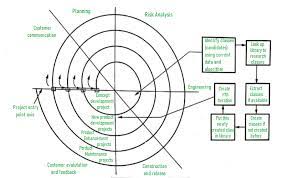Distributed Software Development: Harnessing the Power of Collaboration
In today’s interconnected world, distributed software development has emerged as a game-changer for businesses. It refers to the practice of developing software by teams located in different geographical locations, often working in different time zones. This approach has gained popularity due to its ability to leverage the best talent from around the globe, improve productivity, and reduce costs.
One of the key advantages of distributed software development is access to a global talent pool. With advancements in communication technology and collaboration tools, businesses can now tap into a diverse range of skills and expertise from various corners of the world. This allows companies to assemble highly specialized teams that can deliver exceptional results.
Moreover, distributed software development enables round-the-clock productivity. By having teams spread across different time zones, work can continue seamlessly even when one team signs off for the day. This not only reduces project timelines but also ensures faster delivery and increased efficiency.
However, managing a distributed software development team comes with its own set of challenges. Effective communication becomes paramount when team members are not physically present in the same location. Regular video conferences, instant messaging platforms, and project management tools become essential for maintaining clear lines of communication.
Building trust among team members is another crucial aspect of successful distributed software development. Since team members may never meet face-to-face, it is important to foster an environment where everyone feels valued and connected. Regular team-building activities, virtual social events, and open channels for feedback can help create a sense of camaraderie among remote team members.
Furthermore, establishing robust processes and workflows is vital for managing distributed software development projects effectively. Clearly defined roles and responsibilities, regular progress updates, and transparent documentation are essential for ensuring that everyone is on the same page throughout the project lifecycle.
Security also becomes a concern when working with remote teams on sensitive projects. Implementing secure networks, encrypted communication channels, and strict access controls are necessary measures to safeguard intellectual property and sensitive data.
In conclusion, distributed software development has revolutionized the way businesses approach software development. It offers access to a global talent pool, enables round-the-clock productivity, and reduces costs. However, it requires effective communication, trust-building, and robust processes to overcome the challenges associated with managing remote teams. By harnessing the power of collaboration across geographical boundaries, businesses can unlock new opportunities for innovation and growth in the digital age.
Exploring Distributed Software Development: 4 Common Questions Answered
- What are the potential benefits of following a distributed team model?
- What is a distributed development model?
- What is a distributed development company?
- What is a distributed engineering team?
What are the potential benefits of following a distributed team model?
Following a distributed team model can bring several potential benefits to businesses. Here are some key advantages:
- Access to a Global Talent Pool: By embracing a distributed team model, businesses can tap into a vast pool of talent from different geographical locations. This allows organizations to assemble teams with diverse skill sets, expertise, and cultural perspectives. It increases the likelihood of finding the right talent for specific projects and ensures access to specialized skills that may not be available locally.
- Cost Savings: Operating with a distributed team model can often result in significant cost savings for businesses. By hiring remote workers or outsourcing tasks to different locations, companies can reduce expenses related to office space, infrastructure, and employee benefits. Additionally, hiring talent from regions with lower labor costs can provide cost advantages without compromising on quality.
- Round-the-Clock Productivity: Having teams spread across different time zones enables businesses to achieve round-the-clock productivity. While one team finishes their workday, another team in a different time zone can continue working on the project. This eliminates downtime and significantly reduces project timelines, leading to faster delivery and increased efficiency.
- Enhanced Flexibility: Distributed teams offer greater flexibility in terms of work arrangements. Remote work allows employees to have more control over their schedules and work environments, resulting in improved work-life balance and increased job satisfaction. This flexibility often leads to higher levels of employee retention and productivity.
- Improved Diversity and Inclusion: A distributed team model fosters diversity and inclusion by breaking down geographical barriers. It allows organizations to build multicultural teams that bring together individuals from various backgrounds, cultures, and perspectives. Embracing diversity promotes creativity, innovation, and better decision-making within the team.
- Business Continuity: Distributed teams provide an added layer of resilience when it comes to business continuity planning. In the face of natural disasters, political instability, or other unforeseen events that may impact one location or region, having distributed teams ensures that work can continue seamlessly from alternate locations. This reduces the risk of disruptions to critical business operations.
- Increased Productivity and Efficiency: Studies have shown that remote workers often experience higher levels of productivity and job satisfaction. With fewer distractions and the ability to create personalized work environments, distributed teams can focus on their tasks more effectively. Additionally, the use of collaboration tools and project management software enhances communication and streamlines workflows, leading to improved efficiency.
While there are numerous potential benefits to following a distributed team model, it is important for organizations to establish effective communication channels, foster trust among team members, and implement robust processes to overcome the challenges associated with managing remote teams successfully.
What is a distributed development model?
A distributed development model, also known as distributed software development or remote development, is an approach to software development where teams are geographically dispersed and work on a project collaboratively. Unlike traditional co-located development teams that work in the same physical location, distributed development involves team members working from different locations, often in different time zones.
In a distributed development model, team members can be located in different cities, countries, or even continents. They communicate and collaborate using various communication tools and technologies such as video conferencing, instant messaging platforms, project management tools, and version control systems.
This model allows organizations to tap into a global talent pool and assemble teams with diverse skills and expertise. It offers several advantages such as access to specialized talent, increased productivity through round-the-clock work cycles, reduced costs by leveraging lower-cost regions, and improved flexibility in scaling resources based on project needs.
However, managing a distributed development model also presents challenges. Effective communication becomes crucial when team members are not physically present in the same location. Time zone differences can impact real-time collaboration and coordination. Cultural differences may affect understanding and interpretation of requirements or expectations. Ensuring consistent quality across geographically dispersed teams can also be challenging.
To overcome these challenges, organizations adopting a distributed development model need to establish effective communication channels and processes. This includes regular communication through video conferences or virtual meetings to align goals and expectations, sharing project documentation through cloud-based platforms for easy access by all team members, establishing clear roles and responsibilities for each team member, implementing robust project management practices to track progress and milestones effectively.
Overall, a distributed development model offers opportunities for organizations to leverage global talent effectively while overcoming geographical barriers. With proper planning, communication strategies, and collaboration tools in place, it can lead to successful software development outcomes even with teams spread across different locations.
What is a distributed development company?
A distributed development company, also known as a remote or virtual development company, is an organization that operates with teams of software developers and other professionals located in different geographical locations. Unlike traditional companies where all employees work from a central office, distributed development companies leverage technology to enable collaboration and communication among team members who may be situated in various parts of the world.
These companies embrace the concept of remote work and often have a decentralized structure. They utilize communication tools, project management software, and collaboration platforms to facilitate seamless cooperation among team members despite their physical separation. This approach allows businesses to tap into a global talent pool and assemble teams with diverse skills and expertise.
Distributed development companies offer several advantages. First, they can access highly specialized talent from around the world, allowing them to build teams tailored to specific project requirements. This flexibility enables businesses to work with experts in various technologies or industry domains without being limited by local talent availability.
Secondly, distributed development companies can operate with increased efficiency due to round-the-clock productivity. With teams working in different time zones, projects can progress continuously without delays caused by traditional office hours. This can significantly reduce project timelines and accelerate time-to-market for products or services.
Additionally, distributed development companies often offer cost savings compared to traditional on-site development models. By leveraging talent from countries with lower labor costs or favorable exchange rates, businesses can achieve cost-effective solutions without compromising quality.
However, managing a distributed development company comes with its own set of challenges. Effective communication becomes crucial when team members are not physically present in the same location. Clear channels for collaboration, regular video conferences, and instant messaging platforms are essential for maintaining strong connections among team members.
Building trust within a distributed team is also vital for successful outcomes. Since face-to-face interactions may be limited or nonexistent, fostering an environment of trust requires proactive efforts such as regular virtual meetings, team-building activities, and open lines of communication.
In summary, a distributed development company is an organization that operates with teams of professionals located in different geographical locations. By embracing remote work and leveraging technology, these companies can access global talent, increase productivity, and achieve cost savings. Effective communication, trust-building, and robust processes are key to successfully managing distributed teams and delivering high-quality software development services.
What is a distributed engineering team?
A distributed engineering team is a group of engineers and technical professionals who work together on projects, but are located in different geographic locations. Unlike a traditional co-located team, where all members work in the same physical office space, a distributed engineering team relies on technology and virtual collaboration tools to communicate and coordinate their efforts.
In a distributed engineering team, members may be spread across different cities, countries, or even continents. They collaborate remotely using various communication channels such as video conferencing, instant messaging platforms, email, and project management tools. This setup allows businesses to tap into global talent pools and assemble teams with diverse skills and expertise.
A distributed engineering team offers several advantages. First and foremost is access to a wider talent pool. By removing geographical barriers, businesses can hire engineers from around the world who possess specialized skills that may not be readily available locally. This enables companies to build teams with the right expertise for specific projects.
Another benefit is increased flexibility. Distributed teams can operate across different time zones, allowing work to progress continuously without interruptions. This can lead to faster project completion times and increased efficiency.
Cost savings are also a factor when working with distributed engineering teams. By leveraging talent from lower-cost regions or countries, businesses can potentially reduce labor costs while maintaining high quality standards.
However, there are challenges associated with managing a distributed engineering team. Effective communication becomes crucial as team members cannot rely on face-to-face interactions. Clear communication channels and regular updates are essential for ensuring that everyone is aligned and working towards common goals.
Building trust among team members is another challenge in a distributed setup. Without physical proximity, it may take extra effort to establish strong relationships and foster collaboration among remote team members.
Additionally, managing differences in time zones, cultural norms, and language barriers requires careful consideration and adaptability from both the team members and leadership.
Overall, a distributed engineering team offers unique opportunities for businesses to access global talent pools while overcoming geographical limitations. With the right tools, processes, and communication strategies in place, organizations can successfully harness the collective expertise of their distributed engineering teams to drive innovation and achieve project success.




